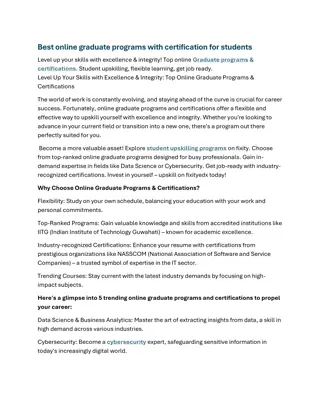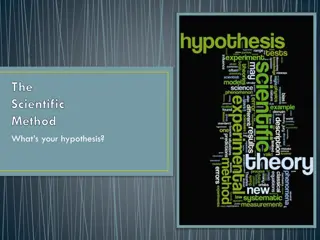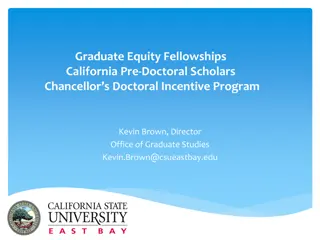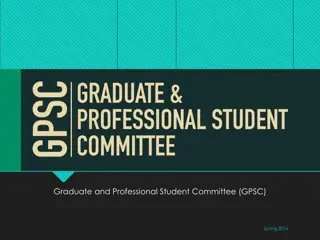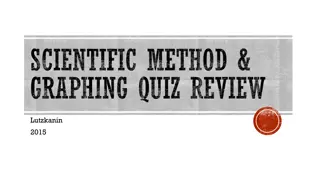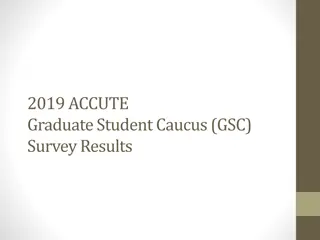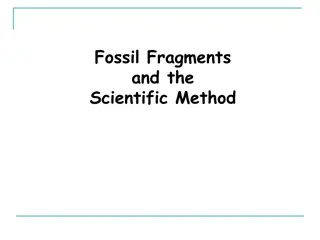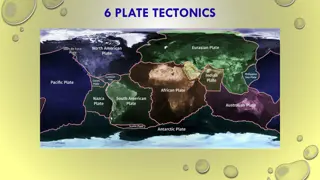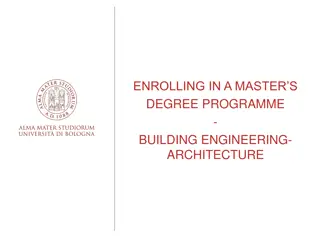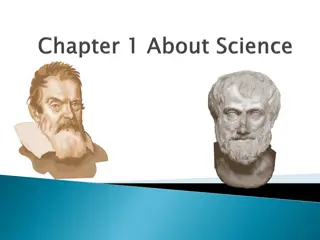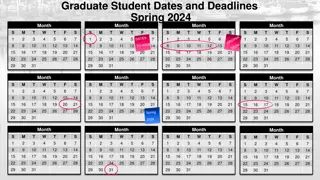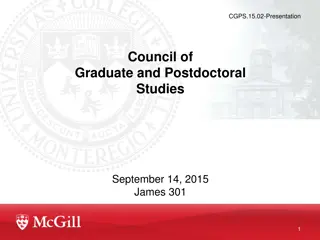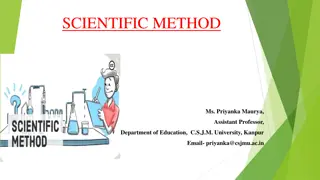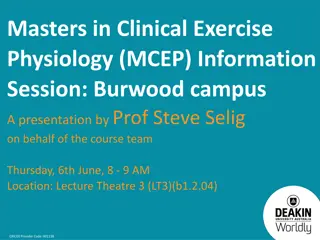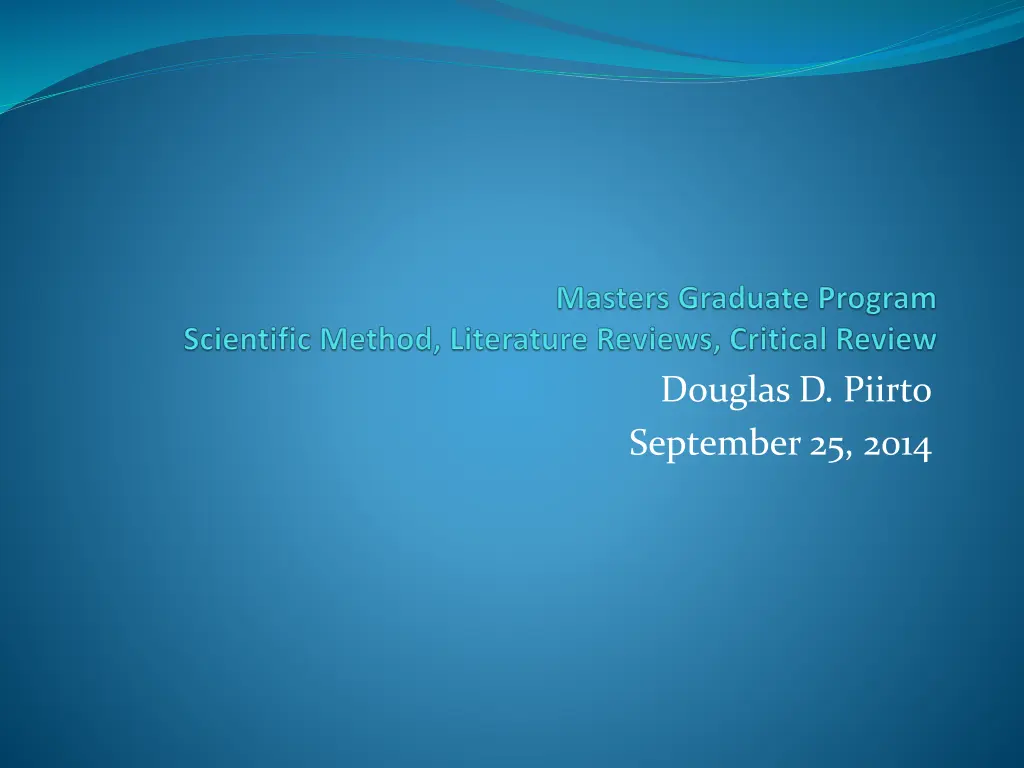
Understanding the Scientific Method and Literature Review
Explore the history, attributes, terms, and steps of the scientific method, along with the concept of a literature review. Learn about hypothesis, experimentation, analysis, and communication in scientific research.
Download Presentation

Please find below an Image/Link to download the presentation.
The content on the website is provided AS IS for your information and personal use only. It may not be sold, licensed, or shared on other websites without obtaining consent from the author. If you encounter any issues during the download, it is possible that the publisher has removed the file from their server.
You are allowed to download the files provided on this website for personal or commercial use, subject to the condition that they are used lawfully. All files are the property of their respective owners.
The content on the website is provided AS IS for your information and personal use only. It may not be sold, licensed, or shared on other websites without obtaining consent from the author.
E N D
Presentation Transcript
Douglas D. Piirto September 25, 2014
Definition of Scientific Method Oxford Dictionary defines scientific method as: A method or procedure that has characterized natural science since the 17th century, consisting in systematic observation, measurement, and experiment, and the formulation, testing and modifications of hypotheses.
Attributes of Modern Scientific Method A method of: acquiring new knowledge, investigating phenomena, orcorrecting and integrating previous knowledge. Based on empirical and measurableevidence. Systematic observation Replicated and Repeatable Focused Hypothesis driven Based on what is known and what is not known External review Communicated Archived
History Dates back to 7th century BCE when Daniel, a Jewish captiveof Babylonian King Nebuchadnezzarconducted a scientificexperiment focused on a hypothesiswith a control group, treatment group, and conclusions. Many prominent people have helped us developed the scientific method including such names as: Aristotle (4th century BCE), Plato, Euclid, Ptolemy (2nd century CE) and many others. Modern scientific method based on more recent scientists such as: Roger Bacon (13th centruy CE), Francis Bacon (17th century CE), Liindberg (21st century), and manyothers
Terms Hypothesis Educated guess about relatonship between independentand dependentvariables Independentvariable is the manipulated variablee.g., varying the amountsof nitrogen to determine the effecton plantgrowth Dependentvariable (e.g., plantgrowth) is the variable that is affected by varying amountsof nirogen fertilization Effect is a noun e.g., the effectof nitrogen fertilizationon plant growth Affect is a verb e.g., How doe nitrogen affectplantgrowth and survival Model Theory Control Group
Steps of Scientific Method 1. Ask a focused questionwith critical thinking skills 2. Do background research (i.e., literature review) 3. Constructa hypothesis statement 4. Test hypothesis bydoing a controlled experiment 5. Analyzedata 6. Draw conclusions 7. Communicateyourresults.
What Is a Literature Review Machi and McEvoy (2009) definea Literature Review as: a written document that presentsa logically argued case founded on a comprehensive understanding of the current state of knowledge about a topic of study. This case establishesa convincing thesis to answerthe study s question. It is a written agrument that promotesa thesis position by building a case from credibleevidence based on previous research. It lays out a logical case to defend the thesis position taken Basic literaturereview looksat what we know Advanced literature review is focused on identifying a research problem based on original research
Steps of the Literature Review Process Machi and McEvoy (2009) list the following steps for a Literature Review Process: 1. Select a topic 2. Search the literature 3. Developthe argument 4. Survey the literature 5. Critique the literature 6. Write the review
Conducting a Critical Review of a Scientific Paper Refer to handout Journal Requirements and blind peer reviews Literaturereviewcontains importantpapers published on the topic. Clearlyexpanation of what is known in relation to what is not known. This then leads to the objectivesand hypothesis of the study Purpose/objectivesof the paperclearly stated Hypothesis clearly stated Methodology fits the hypothesisand is focused on the objectives of the paper Data is properly colledcted and analyzed Tables and Figuresare properly presented Discussion relates to the resultsobtained and to the published literature Summary and Conclusion is concised written And much more
When Doing Critical Reviews Be tactful Don t be sarcastic State the strengths of the paper State the areas thatcould be improved Show toleranceand courtesy to the author(s) Remember the author knows the paper betterthan you do Help the author theauthorcould beyou someday
Piirto Assignment No. 2 Identifya focused question related to whatyou want your Masters study to focuson Initiateyour Literature Review Utillize library resources in yourquest to locate information Start by finding 5 to 10+ peer reviewed papers related to the topic Make a listof those papers Select oneof the 10 articlesyou listand conducta critical review of that paper. Developa short report.
References: 1. Goldhaber, A. S., Nieto M. M. 2010. Photon and graviton mass limits. Rev. Mod. Phys. (American Physical Society) 82:939, doi: 10.1103/RevModPhys.82.939. pages 939-979. 2. Lindberg. 2007. The beginnings of western science. Univ. Of Chicago Press. 2nd edition. 3. Machi L. A. and B. T. McEvoy. 2009. The Literature Review. Corwin Press. 164 pages. 4. Newton, I. (1687, 1713, 1726). Philosophiae Naturalis Principia Mathematica, Universityof California Press, ISBN 0-520-08817-4. third Edition. From I. Bernard Cohen and Anne Whitman s 1999 Translation. 974 pages. 5. Oxford Dictionary


